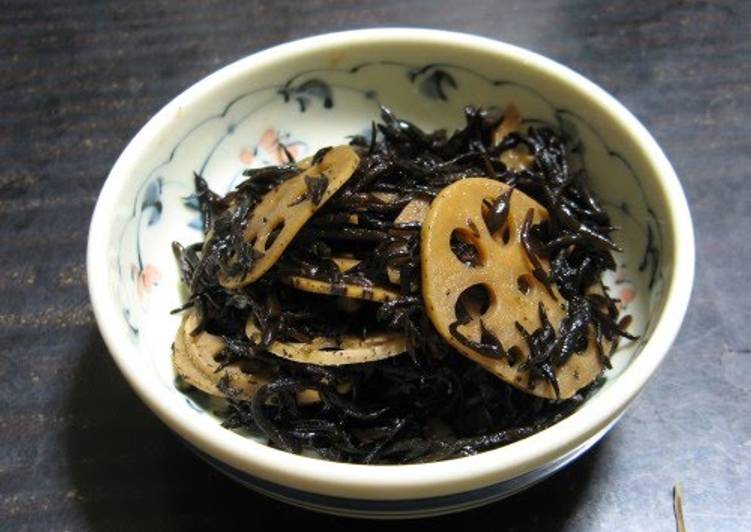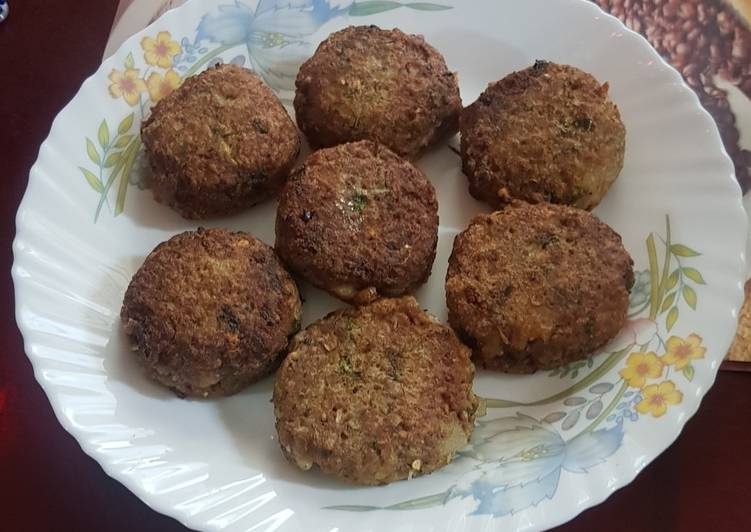
Hello everybody, it is me, Dave, welcome to our recipe site. Today, I’m gonna show you how to make a distinctive dish, macrobiotic: hijiki and lotus root. One of my favorites food recipes. For mine, I am going to make it a bit unique. This will be really delicious.
Macrobiotic: Hijiki and Lotus Root is one of the most popular of recent trending foods in the world. It’s simple, it is fast, it tastes yummy. It is appreciated by millions daily. They’re nice and they look wonderful. Macrobiotic: Hijiki and Lotus Root is something which I’ve loved my whole life.
Macrobiotic: Hijiki and Lotus Root This is a basic macrobiotic side dish. In the photo is the hijiki dish along with pressure cooked brown rice and aduki beans, carrot ginger pickle, and blanched cabbage. Add lotus root plus enough of the soaking water to cover. Remember to check the cooking liquid occasionally to make sure it does not dry up and burn.
To begin with this particular recipe, we must first prepare a few components. You can cook macrobiotic: hijiki and lotus root using 4 ingredients and 4 steps. Here is how you cook it.
The ingredients needed to make Macrobiotic: Hijiki and Lotus Root:
- Make ready 150 grams Lotus root
- Get 50 grams Hijiki dried seaweed
- Make ready 3 tbsp Soy sauce
- Make ready 1 tbsp Vegetable oil
Hijiki is purchased in dried form, and for use it in salads, hijiki is first rehydrated in water then drained.. Kanten is an excellent plant-based alternative to gelatin. The full variety of temperate vegetables including daikon (fresh and dried), burdock, and lotus root, napa cabbage, watercress, onions, carrots, winter squash, dried shiitake and maitake. Seaweeds, especially nori, wakame, kombu, arame, and hijiki.
Steps to make Macrobiotic: Hijiki and Lotus Root:
- Soak the hijiki in lukewarm water to reconstitute, then cut into easy to eat lengths. Rinse the lotus root well, then thinly slice into wedges or into rounds.
- Heat the vegetable oil in a sauce pan, then sauté the lotus root. When the lotus root starts to become translucent, add the hijiki and sauté.
- Add enough water to cover the ingredients, cover with a lid, then reduce to low-medium heat. Simmer until thoroughly cooked.
- When tender, add the soy sauce, reduce the heat, then simmer until the liquid boils out.
The full variety of temperate vegetables including daikon (fresh and dried), burdock, and lotus root, napa cabbage, watercress, onions, carrots, winter squash, dried shiitake and maitake. Seaweeds, especially nori, wakame, kombu, arame, and hijiki. Sea Salt; Umeboshi Plum and Vinegar; Brown Rice Vinegar; Sesame Seeds and Tahini Lotus roots are usually sliced crosswise to reveal their attractive pattern of holes. They are traditionally added to soups and stews or simply stir-fried, as well as braised in soy sauce. They can also be thinly sliced and added raw to salads.
How to Improve Your Mood with Food
Many of us have been taught to think that comfort foods are not good and to be avoided. At times, if your comfort food is candy or some other junk food, this is very true. Other times, though, comfort foods can be altogether nutritious and it’s good for you to consume them. There are several foods that really can boost your moods when you consume them. When you feel a little down and are needing an emotional boost, try a few of these.
Eggs, believe it or not, are terrific for helping you fight depression. Just make sure that you do not toss the egg yolk. The egg yolk is the most essential part of the egg iwhen it comes to helping raise your mood. Eggs, especially the egg yolks, are full of B vitamins. B vitamins can really help you improve your mood. This is because the B vitamins help your neural transmitters–the parts of your brain that control your mood–run better. Try consuming a couple of eggs to cheer up!
Build a trail mix out of seeds and/or nuts. Your mood can be elevated by consuming peanuts, almonds, cashews, sunflower seeds, pumpkin seeds, and other types of nuts. This is because these foods are rich in magnesium, which helps to increase your production of serotonin. Serotonin is a feel-good chemical substance that dictates to the brain how to feel at any given point in time. The more serotonin in your brain, the better you’ll feel. Nuts, in addition to improving your mood, can be a super protein source.
Cold water fish are great if you want to feel happier. Cold water fish such as tuna, trout and wild salmon are chock full of DHA and omega-3 fats. These are two substances that boost the quality and function of the gray matter in your brain. It’s true: eating a tuna fish sandwich can earnestly boost your mood.
It’s easy to drive away your bad mood when you eat grains. Barley, quinoa, millet, teff, etc are all wonderful for helping you be in a happier state of mind. These foods fill you up better and that can help you with your moods too. Feeling famished can really bring you down! These grains can improve your mood since it’s not at all hard for your body to digest them. They are easier to digest than other foods which helps kick up your blood sugar levels and that, in turn, improves your mood.
Green tea is really excellent for your mood. You knew green tea had to be included in this article, right? Green tea is high in a certain amino acid known as L-theanine. Studies have found that this specific amino acid can basically stimulate brain waves. This helps raise your mental acuity while having a relaxing effect on the rest of your body. You probably already knew it is not hard to get healthy when you drink green tea. Now you are aware that it can help you be happier also!
As you can see, you don’t need to eat all that junk food when you wish to feel better! Try a couple of of these suggestions instead.


